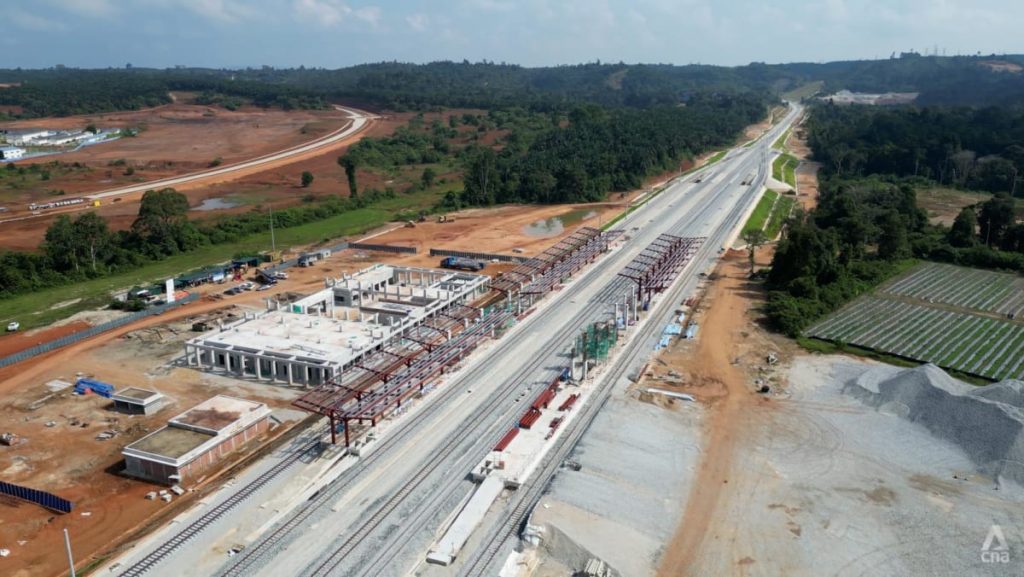Introduction to the ECRL and China’sVISION FOR SOUTHEAST ASIAN CONNECTIVITY
During his official visit to Malaysia in June last year, Chinese Premier Li Qiang expressed Beijing’s interest in exploring a plan to link the East Coast Rail Link (ECRL) with other China-backed railway projects in Laos and Thailand. While the details of this proposal were not divulged, it highlights China’s broader vision of fostering regional connectivity across Southeast Asia. The ECRL, a major infrastructure project in Malaysia, is seen as a potential gateway to enhancing trade, travel, and economic collaboration within the region. This initiative, however, is not without its challenges, as it requires addressing technical, logistical, and geopolitical hurdles.
Expert Insights: The Ambitious Vision and Its Challenges
Nor Aziati Abdul Hamid, a senior researcher at Universiti Tun Hussein Onn’s Industry Centre of Excellence for Railway, described the potential connection of the ECRL with Thailand as an "ambitious vision." She emphasized that this connection could significantly improve connectivity between Malaysia and the broader Southeast Asian region. However, she also pointed out that achieving this goal would require overcoming numerous challenges. These challenges span across infrastructure development, logistics planning, regulatory frameworks, and international cooperation. Essentially, the success of this vision depends on the ability of the involved nations to work together and address these multifaceted issues effectively.
Enhancing Passenger Connectivity in Peninsular Malaysia
Domestically, the ECRL is expected to play a crucial role in improving passenger connectivity in peninsular Malaysia. According to Nor Aziati, the train’s operating speed of up to 160 km/h will significantly enhance the accessibility of many towns that are currently poorly served by the existing rail network. This improvement in connectivity is expected to open up new travel patterns and increase ridership, making rail travel a more convenient and appealing option for both daily commuters and long-distance travelers. The ECRL could therefore serve as a catalyst for socio-economic development in the regions it connects.
Addressing Logistical Demands During Peak Travel Seasons
One of the key areas where the ECRL could make a significant impact is in addressing the logistical demands during peak travel seasons. Nor Aziati highlighted that bus, rail, and flight services to the east coast of peninsular Malaysia experience a surge in demand during major holidays such as Hari Raya Puasa and Hari Raya Haji. These holidays often see a massive influx of travelers returning to their hometowns, leading to sold-out bus tickets weeks in advance. For those who opt to drive, the journey is often arduous due to heavily congested highways like the Karak Expressway and the East Coast Expressway, with travel times exceeding 10 to 12 hours. The ECRL, with its faster and more reliable service, could alleviate some of this pressure and provide a more efficient alternative for travelers.
The Broader Implications of Enhanced Connectivity
The potential connection of the ECRL with other regional railway projects underscores the broader implications of enhanced connectivity for Southeast Asia. By fostering greater integration, this initiative could pave the way for increased trade volumes, tourism, and cultural exchange between Malaysia, Thailand, Laos, and potentially other countries in the region. However, realizing this vision will require careful planning and collaboration among the involved nations. The success of the ECRL and its regional connections will depend on the ability to navigate the complexities of cross-border infrastructure development and the geopolitical dynamics at play.
Conclusion: A Vision for the Future
In conclusion, the ECRL represents a significant step towards enhancing connectivity in Southeast Asia, both within Malaysia and across its borders. While the vision of linking the ECRL with other regional railway projects is ambitious, it highlights the potential for transformative change in the region’s infrastructure and economy. As Nor Aziati Abdul Hamid noted, overcoming the challenges associated with this vision will require a coordinated effort from all stakeholders. If successful, the ECRL could not only improve the lives of millions in Malaysia but also contribute to the broader goal of regional integration and prosperity.












